Banana weevil borer Cosmopolites sordidus
General information
Description and life cycle
The eggs of the banana weevil borer can be found in a pit that has been chewed into the side of the pseudostem. The site of egg laying is nearly impossible to find due to banana sap congealing and covering the hole. The larvae continuously feed within the corm producing distinctive tunnels until they are almost 2cm long when they move towards the outer edge to pupate.
The lifecycle of banana weevil borers (particularly egg and larval periods) is extremely temperature dependent and is shorter in warmer conditions. The total time from egg hatching to adult emergence can be as short as 12 weeks in ideal conditions in northern Queensland.
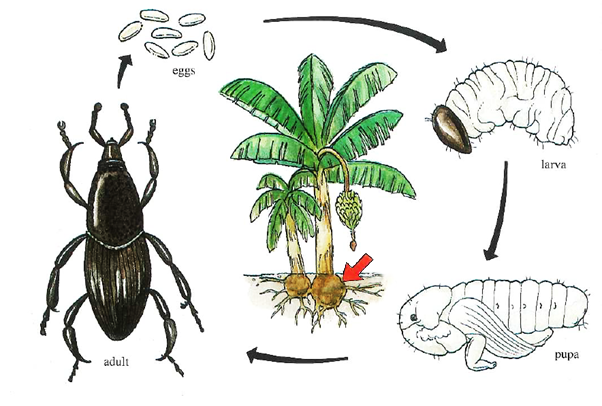
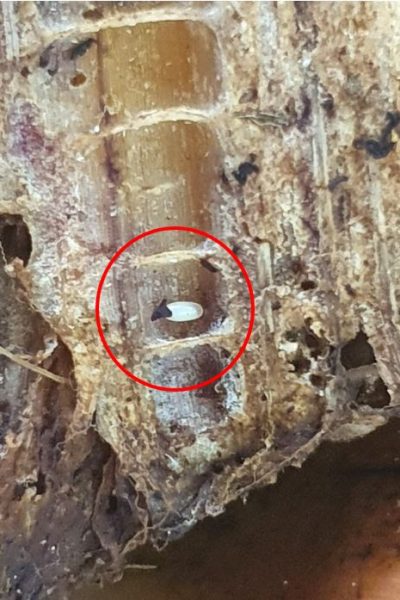
Newly emerged adults are reddish brown but quickly assume their characteristic shiny black appearance as their exoskeleton hardens. The adults are sluggish and fake death if disturbed. However, it can be determined whether they are indeed alive, by gently blowing on them as live adults will wiggle their legs and snouts.
Banana weevil borers have functional wings, however, they rarely, if ever, fly. Instead, they can travel by walking up to 6-7 metres between plants at night, resulting in a very slow spread. Movement is reduced during dry weather, as adults remain in the corm to avoid desiccation. Dispersal of banana weevil borers over larger distances is primarily by the introduction of infested suckers and bits at planting.
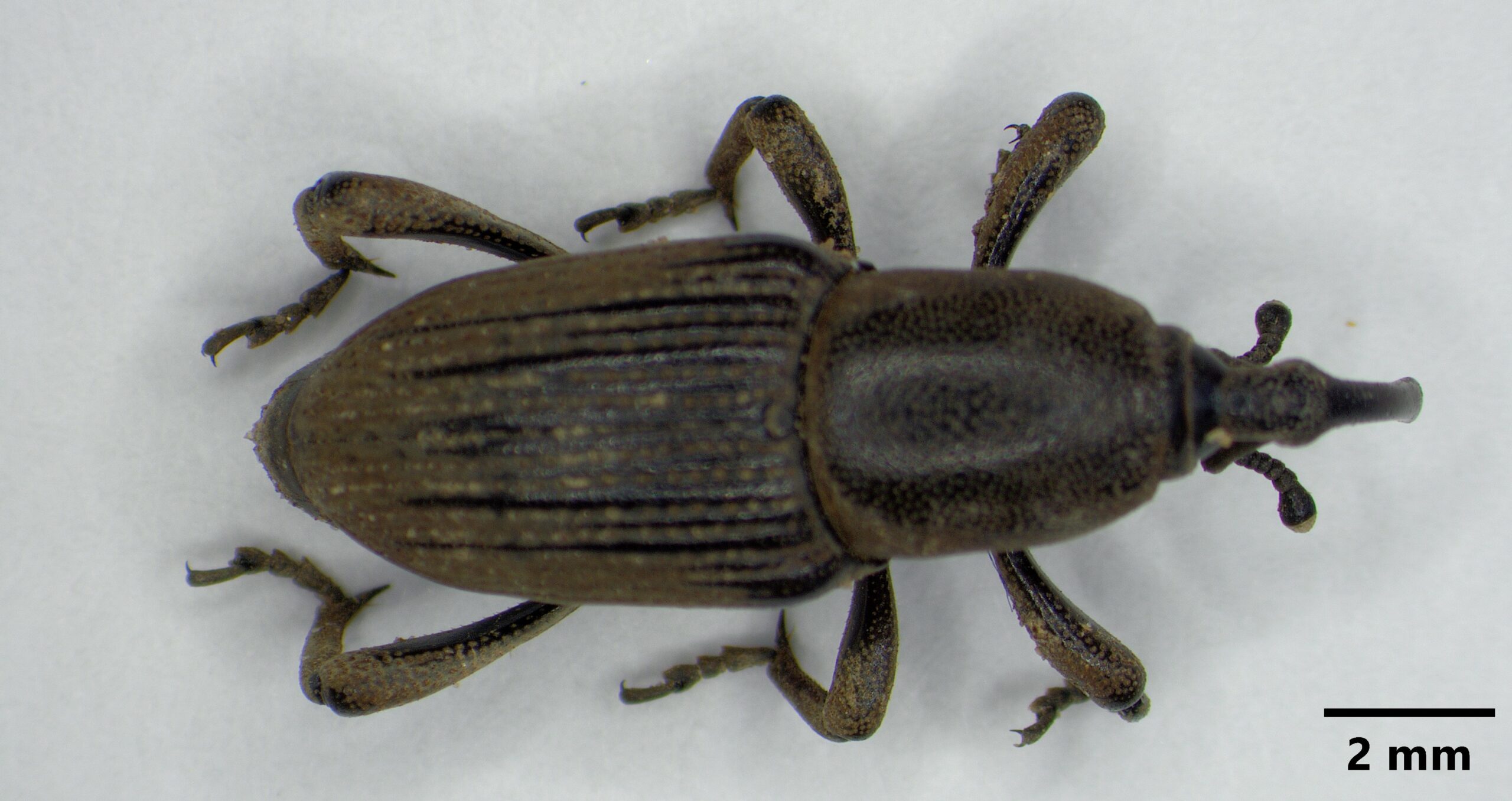
Occurrence & seasonality
Banana weevil borer is found in all major banana growing areas throughout the world. Bananas and other species of the genus Musa are the only known hosts. First recorded at Mackay in 1896, the banana weevil borer has since spread to all major banana growing areas in Australia.
It has been observed that there are two distinct peaks in the emergence and activity of adults– the first in spring during September and October, and the second in autumn, during March and April. These peaks are particularly evident in subtropical regions where activity almost ceases during winter. In the Far North Queensland tropics, where winter temperatures are not as low, activity continues throughout the year although at a reduced rate in winter. In Far North Queensland, dry conditions greatly reduce adult activity, as adults remain in the corm to avoid desiccation, whereas rainfall may be a major factor in increasing adult activity.
Damage
Most of the damage is done by the tunnelling of the larvae which occurs exclusively within the corm. Evidence of larval tunnelling is not noticeable since all the tunnelling is confined to the corm below the surface. In heavy infestations, tunnelling will extend for a short distance up the pseudostem; the presence of tunnels can be seen if the pseudostem is cut close to the soil surface. In plants that have fallen out or snapped off the pseudostem may decay more slowly and tunnelling may extend a greater distance up the pseudostem.
Newly planted blocks are more vulnerable to infestations of banana weevil borer as they don’t yet have a substantial corm (especially tissue-cultured plants), meaning tunnelling will cause proportionally more damage.
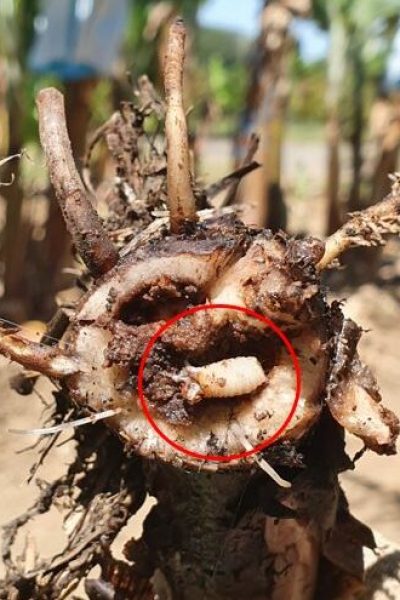
Tunnelling in young plants can cause the death of the cigar leaf if banana weevil borers damage the primary meristem, which is especially likely if tunnelling has extended into the lower pseudostem. However, healthy, fast-growing plants can withstand considerable infestation without showing obvious signs of reduced vigour.
Typical symptoms of a severe infestation are reduced plant growth, choking, yellow leaves and weak or dying suckers. Environmental stress has been shown to exacerbate the symptoms of banana weevil borer infestations. Plants under attack are also prone to falling out (particularly in windy weather) but the root system of fallouts must be inspected carefully to ascertain the cause. Fallouts can occur from both banana weevil borer and burrowing nematode damage. When banana weevil borer is the cause there is an obvious breakage with the lower part of the rhizome and roots are often retained in the ground (snapped off). Whereas if burrowing nematode is the cause the entire corm is exposed along with stubby roots (‘roll-out’).
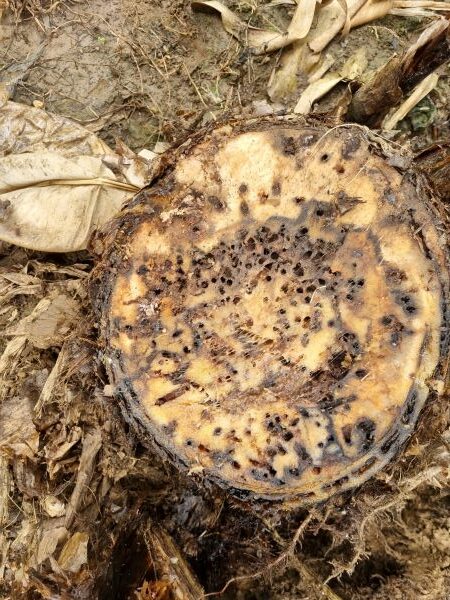
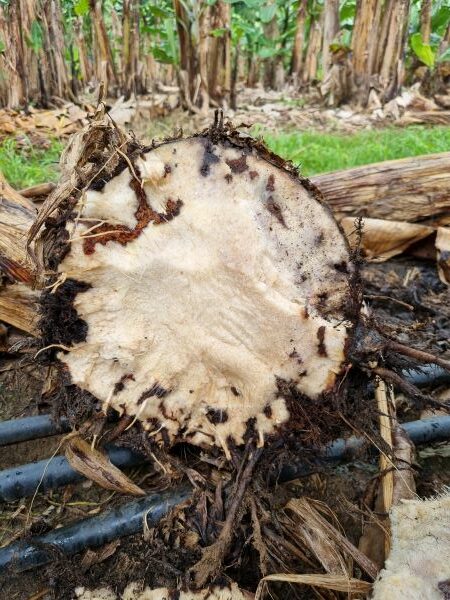
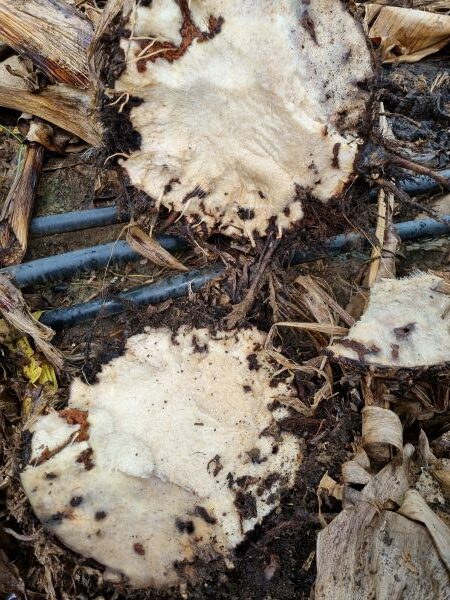
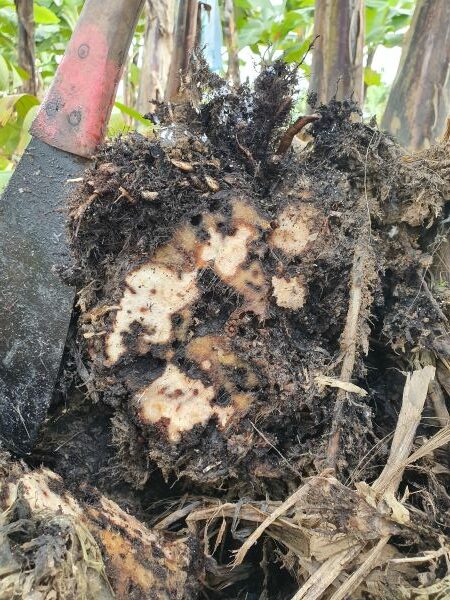
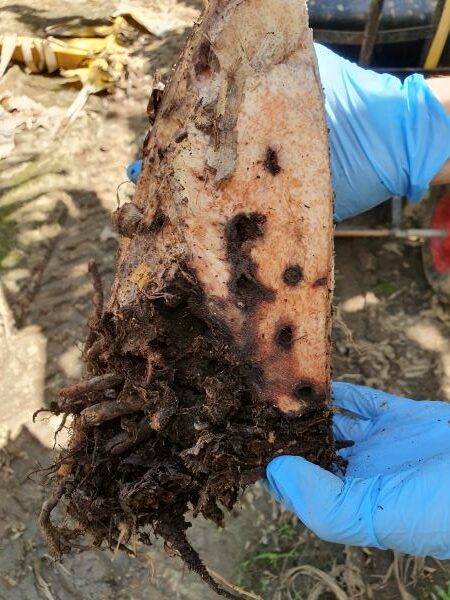
Note: Banana weevil borers will be at higher pressure after weather events that cause serious plant damage, or in blocks that use cultural practices that encourage damage or breakages, such as desuckering, as they are attracted to fresh exposed plant volatiles.
For more information contact:
The Better Bananas team
Department of Agriculture and Fisheries
South Johnstone
07 4220 4177 or email betterbananas@daf.qld.gov.au
This information is adapted from: Pinese, B., Piper. R 1994, Bananas insect and mite management, Department of Primary Industries, Queensland and Treverrow, N., Pearley D., and Ireland, G 1992 Banana weevil borer : a pest management handbook for banana growers. : NSW Agriculture, North Coast Region; NSW Banana Industry Committee; Horticultural Research & Development Corporation.
This information has been updated as part of the National Banana Development and Extension Program (BA19004) which is funded by Hort Innovation, using the banana industry research and development levies and contributions from the Australian Government. Hort Innovation is the grower-owned, not-for-profit research and development corporation for Australian horticulture. The Queensland Government has also co-funded the project through the Department of Agriculture and Fisheries.


